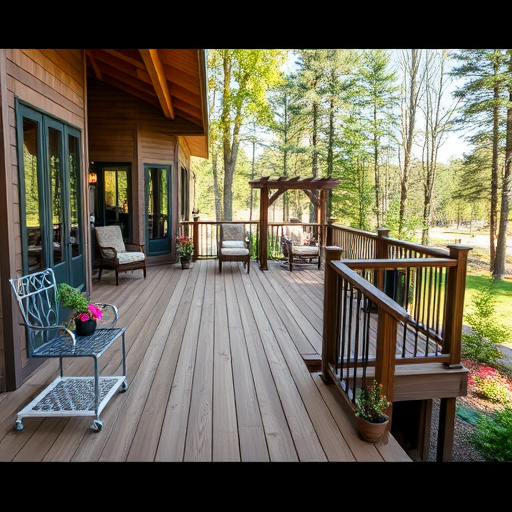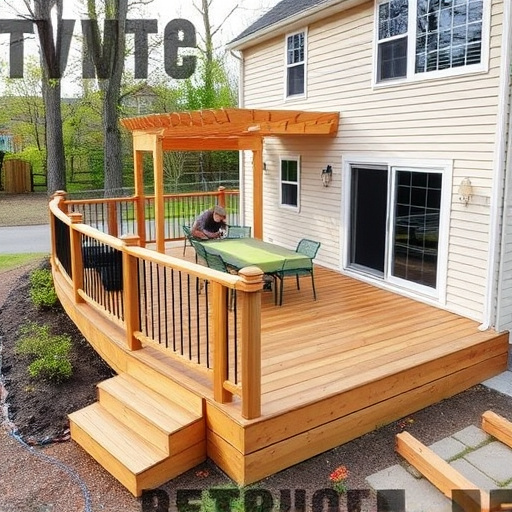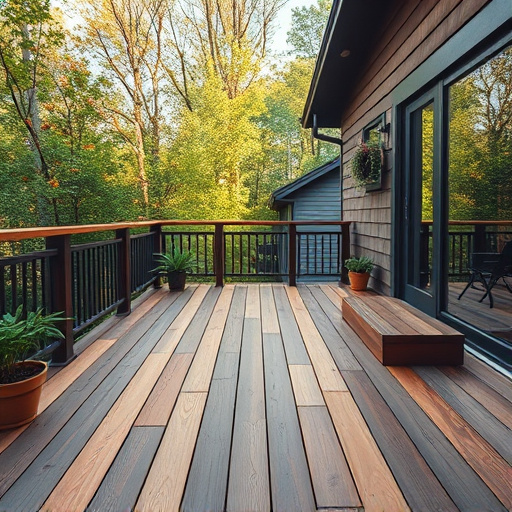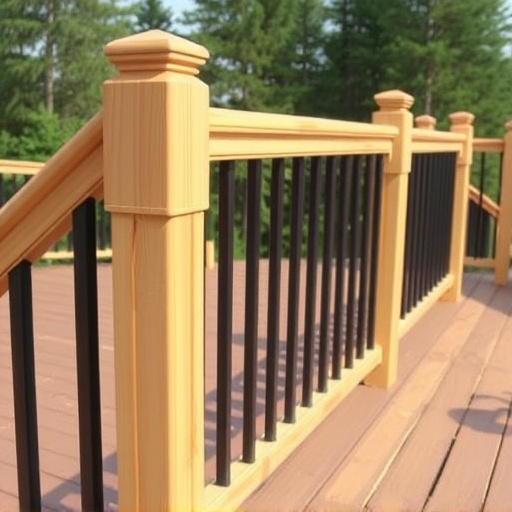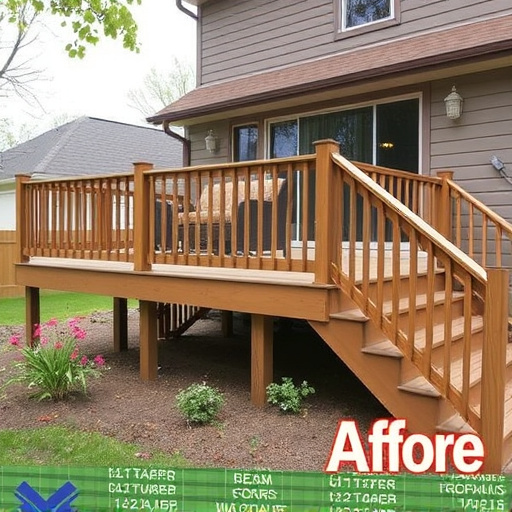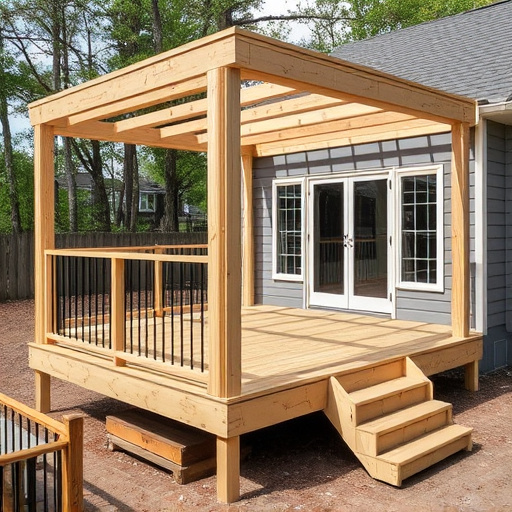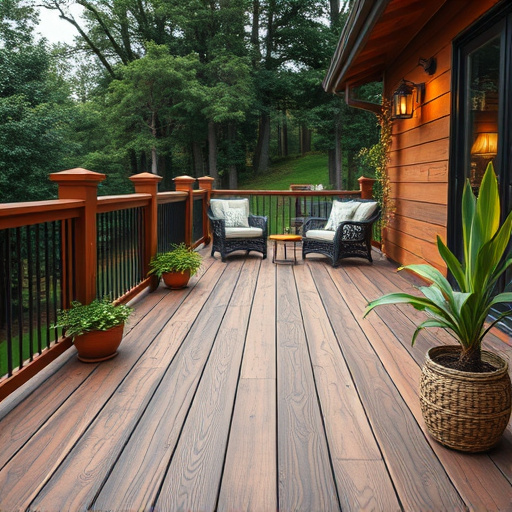Multi-level decks enhance outdoor living with versatile spaces for relaxation and entertainment. Planning involves evaluating existing structure, ensuring functional connections, incorporating safety features, and integrating lighting. Construction requires meticulous transition points, stable temporary supports, aligned roof trusses, consistent measurements, and regular inspections for quality and safety. Optimize search visibility with "multi-level deck" keywords.
A multi-level deck offers both visual appeal and expanded living space, but transitioning between tiers presents unique challenges. This guide tackles the art of navigating these changes seamlessly. We’ll break down the process into manageable steps, from understanding complex deck structures to developing a strategic plan for each transition. By following our expert tips on execution, you’ll master the craft of moving smoothly between levels, ensuring your multi-level deck becomes a well-integrated oasis.
- Understanding Multi-Level Deck Structures
- Planning Your Transition Strategy
- Executing the Transition Between Tiers
Understanding Multi-Level Deck Structures
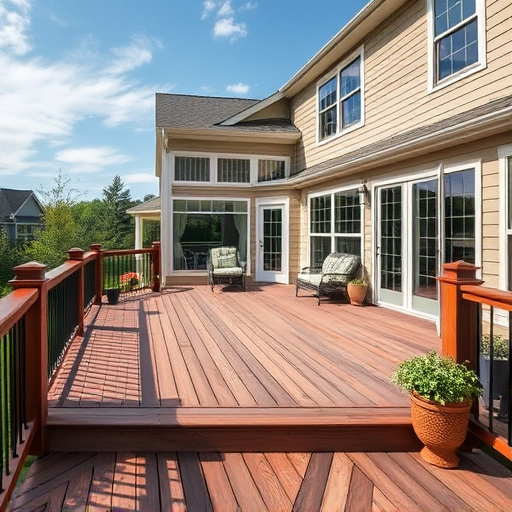
Multi-level deck structures are a popular feature in modern outdoor living spaces, offering versatile and spacious areas for entertainment and relaxation. These decks typically consist of multiple levels, each providing distinct advantages and design opportunities. Understanding this type of construction involves grasping how each level is supported and connected, often through innovative use of materials and engineering.
In residential settings, especially with siding services and residential roofing in mind, a multi-level deck may incorporate varying heights to accommodate different activities. For instance, a lower level could serve as an outdoor living room with comfortable seating, while a higher tier might function as a serene retreat or entertaining area with a stunning view. Roof repair becomes an important consideration for maintaining the structural integrity of these decks, ensuring safety and longevity, especially when designed with diverse topographical elements in mind.
Planning Your Transition Strategy
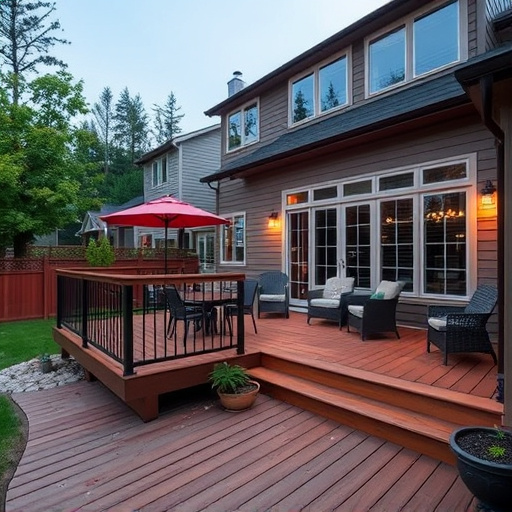
When planning your transition strategy for a multi-level deck, consider the overall design and functionality you want to achieve. Different levels in a multi-level deck serve various purposes—from relaxing to entertaining guests or simply providing additional living space. A well-thought-out plan will ensure a seamless shift between these areas. Start by evaluating the existing structure: Assess the materials used for each level, ensuring they align with your desired aesthetic and durability requirements. For instance, you might choose to maintain a consistent material theme across levels or introduce variations to create visual interest.
Keep in mind that transitioning between tiers should not only be visually appealing but also functional. Think about the flow of movement; are there adequate connections between levels? Are handrails and guardrails necessary for safety, especially on higher decks? Incorporating these considerations into your transition strategy will ensure a safe and enjoyable experience for all users, whether they’re enjoying a cup of coffee al fresco or hosting a gathering. Additionally, consider integrating outdoor features like lighting to enhance the ambiance as you move from one level to another.
Executing the Transition Between Tiers
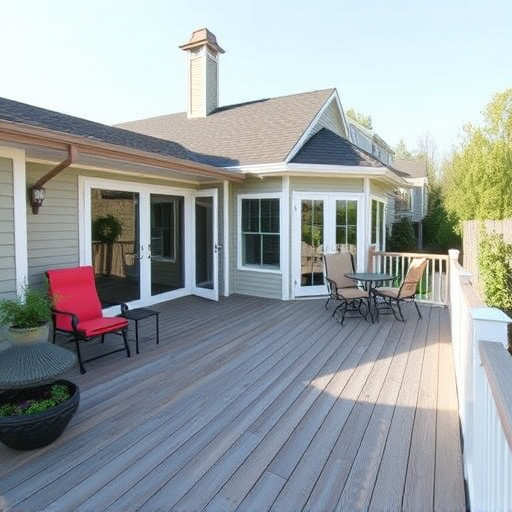
Transitioning between tiers in a multi-level deck involves careful planning and precise execution to ensure safety and maintain the structural integrity of your outdoor living space. Once you’ve determined the angle and layout of your deck, it’s time to put your plan into action. Begin by securing temporary supports at the transition point to stabilize the deck during construction. This step is crucial for multi-level decks as it prevents sudden collapses and ensures a solid foundation for the new tier.
Next, focus on exterior home improvements by installing roof trusses or joists that align with the existing structure. Ensure these components are securely fastened using appropriate fasteners suitable for residential roofing applications. As you construct the new tier, maintain consistent measurements to create a seamless blend with the lower levels. Regularly inspect the work area to catch any potential issues early on, ensuring the overall safety and quality of your multi-level deck.
Transitioning between tiers in a multi-level deck requires careful planning and execution. By understanding your deck’s structure, developing a strategic plan, and following best practices during the transition process, you can create seamless connections between different levels. This ensures both functionality and aesthetic appeal, enhancing the overall enjoyment of your outdoor living space. Remember, each step—from initial assessment to final touches—is crucial in crafting a well-integrated multi-level deck that becomes the hub of your home’s outdoor lifestyle.





